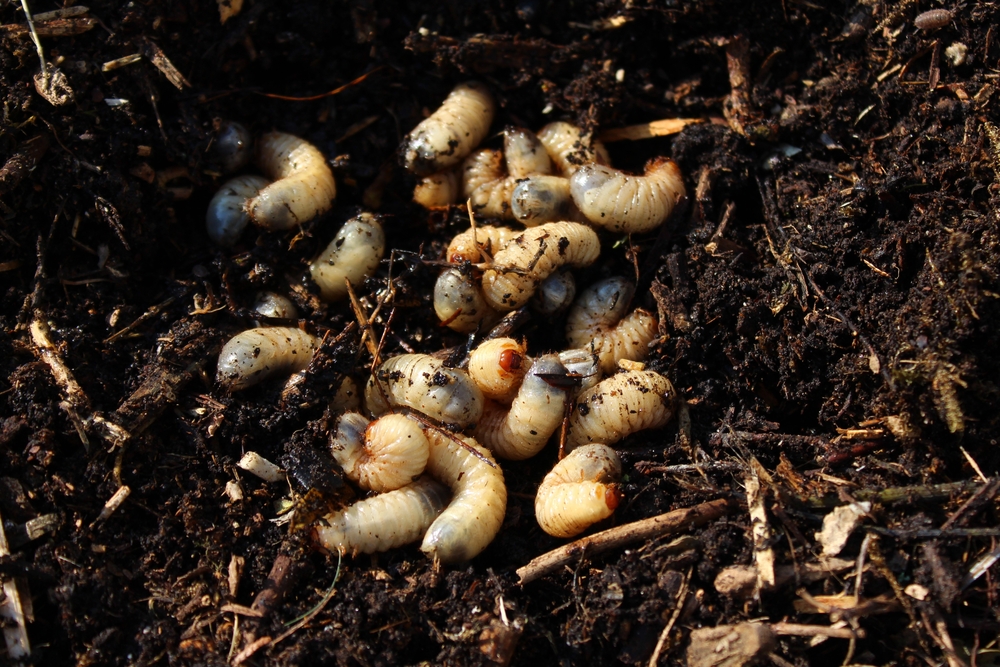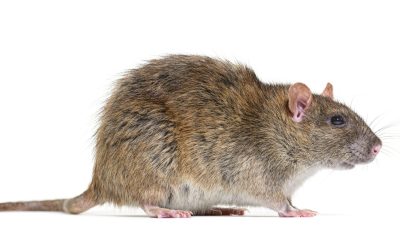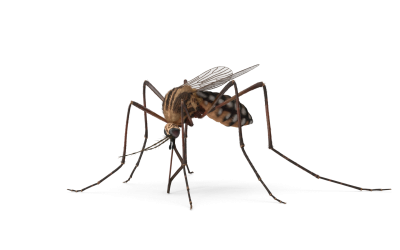A grub is the larval stage of a number of Scarab Beetles. In other words, a grub is simply a Scarab Beetle in its juvenile form before it turns into a Japanese Beetle, Garden Chafer, or European Chafer.
Grubs are often referred to as lawn grubs or white grubs. They feed on grassroots and organic matter present in the soil, which is why the turf of your lawn makes a perfect home for them.
Where do grubs come from?
Grubs turn into adult beetles and come out of the soil to mate. The female beetles then lay their eggs in the soil. These eggs are hatched in grubs in a period of two weeks and they appear on your lawn because they hatch from eggs laid in the soil.
Grubs burrow into the soil to spend the winter and rise back towards the soil surface where they can easily feed on roots by early spring.
How can you identify grubs?
Knowing what a grub looks like is important. This lets you identify them for what they are should you see any on your lawn or when checking for grub infestation.
Lawn grubs or white grubs, as they are often called, are worm-like creatures that possess soft and white bodies. They are C-shaped and are wrinkly by nature. They measure anything from a quarter of an inch to a little above one inch in length. Their legs are close to their heads.
What do grubs do to your lawn?
Grubs feed on grassroots thereby causing damage to your lawn. A depleted root resulting from grub action makes brown patches of irregular shapes appear on your lawn. White grubs also make your lawn peel off from the soil as it no longer has roots holding it firm.
Why are grubs bad?
Grubs can cause extensive damage to your lawn. They can leave your lawn without roots, resulting in dead brown patches which destroy the look of your lawn.
Damages from grub action go beyond the white grubs themselves. Birds, raccoons, skunks, armadillos, and other animals that feed on grubs can begin tearing down your lawn in search of food.
Can you avoid having grubs on your lawn?
Grubs can be avoided with proper lawn care. Fertilize and mulch your lawn to keep it healthy. You can create artificial drought by watering your lawn infrequently as lawn grubs need moisture content to survive. However, when you do water your lawn, soak the ground to promote the growth of stronger and deeper roots.
Furthermore, keep your lawn at two inches minimum. Beetles would rather lay eggs in short grasses. Aerating your soil can also send beetles away as they prefer compact and undisturbed soil.
How to know if you have a grub infestation
Grubs live and thrive below the earth’s surface. This makes their presence undetected until a significant amount of damage has been done.
Signs of grub infestation include dead brown patches on your lawn. To confirm that this is a direct sign of grub infestation, try to uproot from the brown patch. You will notice that the root has been eaten off. Additionally, watch out for prey of grubs like birds and raccoons tearing up your lawn in search of grubs to eat.
How to get rid of grubs
Grubs, like any other pests, require immediate action to avoid a bigger and more complicated situation. The surest way to deal with this pest before it becomes a problem is to hire experienced pest control experts.
If you attempt to proceed with actions aimed at eliminating grubs on your own you might not only destroy useful soil minerals and organisms but also your lawn itself, which you are trying to save. This is why we recommend calling in some experienced help to deal with the root of the problem and preserve your lawn.
At Shoreline Environmental Pest Solutions, we are experts in household and garden pests. Once grub action is detected on your lawn, contact us immediately to determine the extent of the infestation and damage as well as the appropriate pathway to restoring your lawn’s glory. You can also send us an email at [email protected] or even give us a call at 561-842-4700. Let’s get the grubs under control so you can get back to enjoying your pest-free lawn.





0 Comments